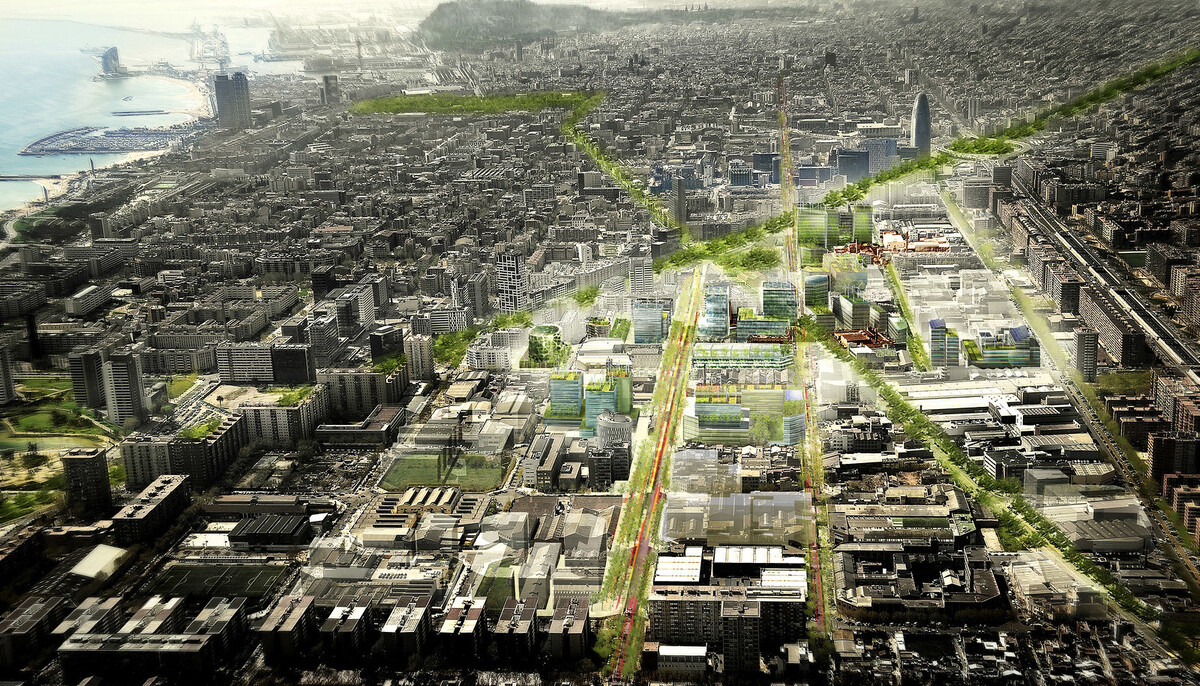Data-driven urban architecture is transforming the way cities are designed, constructed, and experienced. Architects and urban planners may design more resilient, sustainable, and efficient urban environments by utilizing cutting-edge technologies like Artificial Intelligence (AI), Big Data, and Building Information Modeling (BIM). In addition to facilitating accurate decision-making, data use improves urban areas’ usability and livability.
Data-driven strategies are becoming crucial in determining the future of urban landscapes as cities deal with issues including resource management, population expansion, and climate change. This article explores five case studies that demonstrate the potential of data-driven urban architecture and how technological and design innovation is transforming the field. These instances illustrate the larger trend toward smarter, more flexible cities where data-driven insights inform all decisions to enhance sustainability and quality of life.
Table of Contents
5 Data-Driven Urban Architecture Case Studies Revolutionizing the Industry
1. The Edge in Amsterdam: The Smartest Office Building in the World

One of the world’s most data-driven office buildings is The Edge in Amsterdam, which was created by PLP Architecture. The building’s numerous sensors and smart technology gather data on temperature, lighting, and even the use of specific workspaces in real time. AI and IoT devices work together to improve energy use and guarantee that the building is used effectively.
Based on data-driven insights, this technology also enables users to customize their workspaces by changing the temperature and lighting to suit their tastes. By lowering energy use, The Edge’s data-driven strategy optimizes sustainability and significantly lowers operating expenses. The success of the building serves as an example of how data may improve office space efficiency and functionality while also promoting more sustainable urban infrastructure.
Suggested article to read: The Ultimate Guide to IoT Sensors in Construction (2024)
2. Masdar City, Abu Dhabi: A Blueprint for Sustainable Urban Design

Masdar City, an ambitious project in Abu Dhabi, is mostly fueled by renewable energy sources and seeks to be the most sustainable metropolitan development in the world. The city optimizes garbage disposal, water management, and energy consumption using data-driven methods. The city’s sensors track traffic patterns and air quality, sending information to a central system that aids in real-time environmental efficiency modifications.
Masdar City is a prime example of sustainable urban design since it uses renewable energy sources and data infrastructure to control energy use and reduce waste. Adaptive urban planning, which enables city planners to forecast future requirements and modify infrastructure appropriately, is another benefit of data integration. Masdar City serves as a prototype for upcoming smart cities, showcasing the use of data to build livable and sustainable urban environments.
3. Barcelona Smart City: Leveraging Data for Urban Efficiency

In order to improve urban living, Barcelona has long been a pioneer in implementing smart city projects, including data-driven technologies throughout the city. Urban efficiency has greatly increased as a result of the city’s usage of IoT sensors to monitor and manage resources like garbage, energy, and water.
Traffic flow optimization, environmental monitoring, and public service management are all aided by the data gathered by these sensors. Examples of how data is enhancing daily life include Barcelona’s garbage cans that sound an alert when they are full and smart streetlights that change their brightness in response to pedestrian activity. Urban planners can make well-informed judgments on the distribution of resources and the growth of cities thanks to this real-time data collecting.
4. Hudson Yards, New York: Integrating Data for Urban Redevelopment

One of the best examples of how data may change large-scale urban initiatives is the Hudson Yards project, a significant urban redevelopment initiative in New York City. Modern technologies like BIM, AI, and IoT are used in the development to build a networked urban environment. The complex’s smart systems keep an eye on everything from pedestrian traffic to energy use.
By using sensors to monitor how public areas are being used, managers may make real-time adjustments to the heating, cooling, and lighting systems to increase comfort and energy efficiency. Additionally, Hudson Yards’ data-driven design has produced environmentally friendly features like green roofs and water recycling systems. A blueprint for environmentally friendly, cutting-edge urban development has been produced by the incorporation of data into Hudson Yards’ architecture.
5. Songdo International Business District: A Smart City Powered by Data

One of the best examples of a city constructed from the ground up with data-driven concepts is Songdo, which is in South Korea. Songdo is referred to as a “smart city” because it incorporates a large amount of data collecting and analysis into its infrastructure, allowing for real-time traffic, energy, and air quality monitoring. Data is included into the city’s design to minimize waste and manage resources effectively.
For example, traffic flow data from sensors incorporated into the city’s roads enables traffic signals to be dynamically adjusted to minimize congestion. An innovative garbage disposal system that eliminates the need for conventional waste collection techniques by using pneumatic tubes to move waste straight from buildings to a central facility is part of Songdo’s data-driven urban architecture strategy. Through the incorporation of data into its architecture, Songdo embodies the future of linked, sustainable urban living.
Conclusion
Data-driven urban architecture remains at the forefront of developing cities that are not just functional but also resilient and sustainable as the urban landscape changes. The case studies discussed in this article show how data may revolutionize resource management, building design, and urban planning. However, for widespread adoption, issues including data protection, integration, and guaranteeing fair access to these developments must be resolved.
As technology develops quickly, data-driven solutions will becoming more complex, enabling city planners and architects to create cities that are more responsive to social, economic, and environmental changes. Adopting data-driven urban architecture will be essential to developing areas that support efficiency, sustainability, and everyone’s well-being as urban populations continue to rise.
FAQs
What is data-driven urban architecture?
- Answer: Data-driven urban architecture is the process of designing, managing, and optimizing urban areas for sustainability, efficiency, and livability utilizing data from several sources, including sensors, artificial intelligence, and Internet of Things devices.
How does data improve sustainability in urban architecture?
- Answer: Through waste reduction, energy conservation, and resource optimization, data enhances sustainability. It makes it possible to track environmental parameters like energy efficiency and air quality in real time.
What are some examples of data-driven smart cities?
- Answer: Barcelona, Masdar City in Abu Dhabi, and Songdo in South Korea are notable examples of cities that use data collection to effectively manage waste, water, energy, and traffic.
How does data influence urban planning and design?
- Answer: By evaluating trends, forecasting future requirements, and allocating resources optimally, data enables architects and urban planners to make well-informed choices that result in more adaptable and efficient urban environments.
What are the challenges of implementing data-driven urban architecture?
- Answer: High installation costs, worries about data protection, and the requirement for qualified staff to oversee intricate systems are obstacles. For adoption to be widely accepted, these obstacles must be removed.
Suggested article for reading:
8 Essential Predictive Analytics Tools for Construction
10 Essential Steps for Conducting a Net-Zero Carbon Assessment
6 Strategies for Net-Zero Waste Management in Construction Sites
A Comparison of 5 Net-Zero Certifications: LEED, BREEAM, and More
Analyzing the Outcomes of COP29: Successes and Areas for Improvement
5 Case Studies of Predictive Analytics in Architecture for 2024
Resources:
- Adams, R., & Milani, S. (2023). “Smart Cities and Urban Development: The Case of Hudson Yards.” Journal of Urban Technology.
- Fahmy, H., & Shaaban, M. (2023). “Sustainability and Innovation in Masdar City.” Sustainable Cities and Society.
- Gómez, E., & Rodríguez, J. (2023). “Barcelona: A Leader in Smart City Data-Driven Solutions.” Urban Studies Journal.
- Koutamanis, A., & Jansen, S. (2022). “The Edge: A Data-Driven Office Building.” Architecture Today.
- Lee, J., & Park, S. (2022). “Songdo: A Case Study in Smart City Development.” Smart Cities Review.
For all the pictures: Freepik | Archdaily





